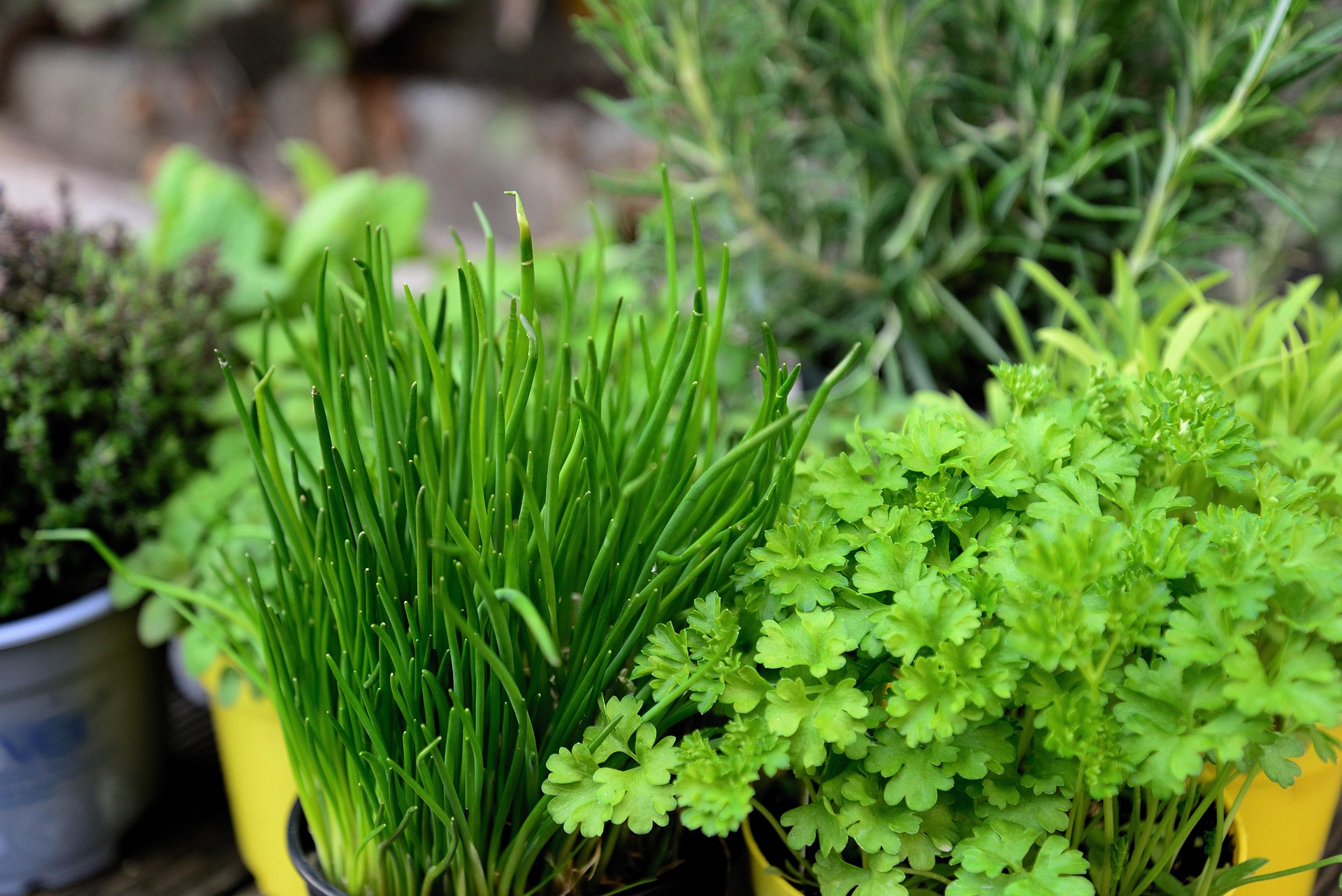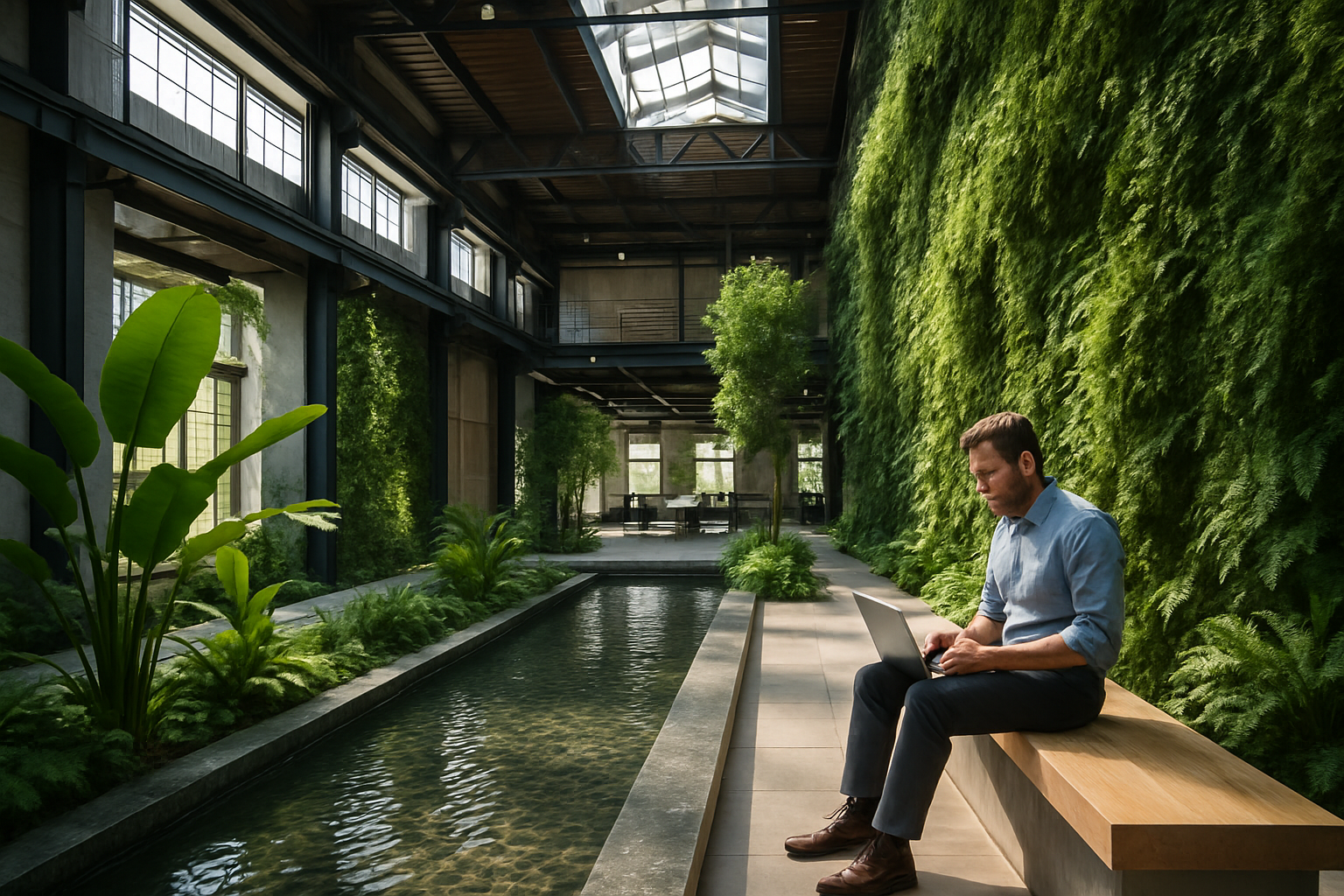Curating Culinary Corners: The Rise of Edible Herb Walls
Imagine stepping into your kitchen, greeted by a lush, vertical garden of aromatic herbs cascading down the wall. The air is filled with the mingling scents of basil, thyme, and mint, transforming your cooking space into a sensory paradise. This isn't a scene from a high-end restaurant or a trendy café – it's the latest innovation in home design: the edible herb wall.

The concept draws inspiration from vertical gardening techniques, reimagined for indoor spaces and tailored specifically for culinary herbs. Unlike traditional potted herbs scattered across countertops or windowsills, herb walls maximize vertical space, creating a dramatic visual impact while freeing up valuable surface area in often cramped urban kitchens.
A Symphony of Scents and Sights
One of the most alluring aspects of an edible herb wall is its multisensory appeal. The vibrant greens of fresh herbs create a living artwork that evolves throughout the seasons, bringing a touch of nature’s dynamism into the home. As different herbs flower and mature, the wall becomes a ever-changing canvas of textures and hues.
The olfactory experience is equally enchanting. Walking past an herb wall releases subtle fragrances into the air, creating an inviting atmosphere that can uplift moods and stimulate appetites. The proximity of fresh herbs also encourages more frequent use in cooking, elevating everyday meals with bursts of fresh flavor.
Designing Your Culinary Canvas
Creating an edible herb wall requires thoughtful planning and design. The first consideration is lighting – most culinary herbs require at least 6 hours of direct sunlight daily. For spaces with limited natural light, incorporating grow lights can ensure your herbs thrive year-round.
Irrigation is another crucial factor. While some DIY enthusiasts opt for manual watering systems, many modern herb walls incorporate automated drip irrigation or hydroponic systems. These not only ensure consistent moisture levels but also minimize maintenance, making herb walls accessible even to those with busy lifestyles or less-than-green thumbs.
When selecting herbs, consider both culinary preferences and growing conditions. Robust herbs like rosemary, thyme, and sage are excellent choices for beginners, while more delicate herbs like cilantro and dill may require extra attention. Mixing herbs with different textures, colors, and growth habits creates visual interest and allows for a diverse culinary palette.
The Technological Edge
As with many aspects of modern home design, technology is playing an increasingly significant role in edible herb walls. Smart sensors can monitor soil moisture, light levels, and nutrient content, sending alerts to your smartphone when intervention is needed. Some systems even integrate with voice assistants, allowing you to check on your herbs or adjust settings with simple voice commands.
For the tech-savvy chef, augmented reality apps are emerging that can identify herbs, suggest recipes based on your current harvest, and provide care instructions tailored to your specific wall setup. These innovations are making herb cultivation more accessible and enjoyable for a wider audience, from seasoned gardeners to complete novices.
Beyond the Kitchen: Herb Walls as Living Art
While the primary function of edible herb walls is culinary, their aesthetic appeal is driving their incorporation into other areas of the home. Designers are experimenting with herb walls as room dividers, creating natural, fragrant partitions in open-plan living spaces. In home offices, herb walls are being installed as stress-reducing, air-purifying elements that can boost productivity and well-being.
Some ambitious homeowners are even scaling up the concept, creating entire herb rooms or conservatories. These spaces serve as year-round growing environments, allowing for a wider variety of herbs and even small vegetables to be cultivated indoors, regardless of climate.
The Social Impact of Herb Walls
Edible herb walls are more than just a design trend – they’re sparking a renewed interest in home gardening and sustainable living. As people become more connected to the source of their food, there’s a growing appreciation for the flavors and nutritional benefits of fresh herbs.
Community initiatives are also embracing the concept, with herb walls appearing in schools, community centers, and public spaces. These installations serve as educational tools, teaching children about plant biology, nutrition, and environmental stewardship. In urban areas, communal herb walls are fostering a sense of shared responsibility and connection among neighbors.
Challenges and Considerations
While edible herb walls offer numerous benefits, they’re not without challenges. Proper maintenance is crucial to prevent issues like mold growth or pest infestations, which can be particularly problematic in indoor environments. Regular pruning and harvesting are necessary to keep herbs healthy and prevent overgrowth.
There’s also the question of cost. While DIY options exist, professional installation of a large, technologically advanced herb wall can be a significant investment. However, many enthusiasts argue that the long-term savings on fresh herbs, combined with the aesthetic and wellness benefits, more than justify the initial expense.
The Future of Flavorful Design
As urban populations continue to grow and living spaces become more compact, innovations like edible herb walls will likely play an increasingly important role in home design. They represent a perfect synthesis of our desire for connection with nature, our growing interest in home cooking, and our need for space-efficient solutions.
Looking ahead, we can expect to see further integration of herb walls with smart home systems, more diverse and exotic herb varieties adapted for indoor growth, and perhaps even the development of self-sustaining ecosystems that require minimal human intervention.
The edible herb wall is more than just a trend – it’s a testament to our evolving relationship with our living spaces, our food, and the natural world. As we continue to seek ways to make our homes more sustainable, functional, and harmonious, the humble herb wall stands as a fragrant reminder of the delicious possibilities that await when we think vertically about our indoor environments.





